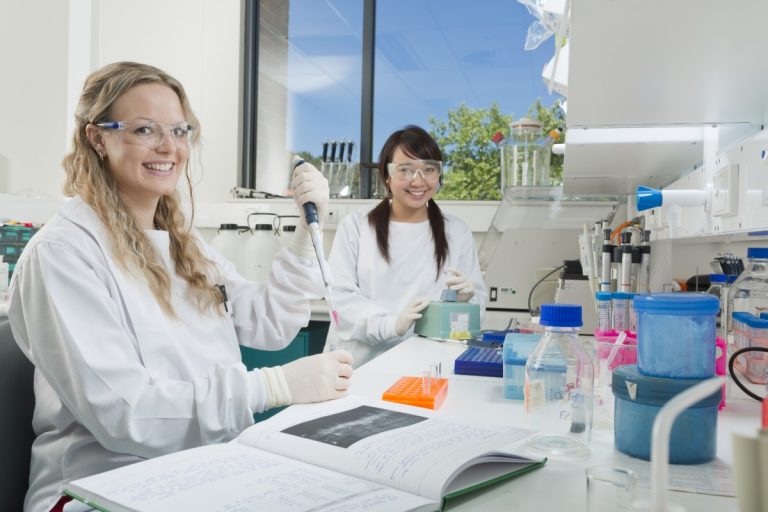
Research into health and how the human body works is held in high regard in today’s society – it helps uncover important information about disease trends and risk factors, outcomes of treatment or public health interventions, functional abilities, patterns of care, as well as health care costs and use.
These discoveries have gone on to influence the development of new medical treatments, therapies and technologies, leading to the overall improvement of healthcare services and public health worldwide.
However, lifestyle changes and longer lifespans are only some of the factors contributing to changes in human health, prompting the need for healthcare professionals to keep up.
Universities are often at the forefront of research breakthroughs, and in order to remain relevant and continue to innovate, researchers must be on the ball regarding changes in their fields.
![]()
Image courtesy of Curtin University
In a speech entitled, The 10 Pillars Shaping the Future of Health Science Education, Dr. Jeffrey P. Gold, a respected U.S. surgeon and medical educator, outlined the upcoming trends in health science education, all of which are shaping the next generation of breakthroughs in the field:
1) Curriculums will become more learner and learning focused
Universities will move away from traditional teaching methods to develop improved curriculums tailored to the way the modern student learns.
2) Students will be assessed by individual competencies and the outcomes of their learning
Individuals each learn at a different pace, so universities will look towards curriculums that can be adjusted to measure their skill, knowledge and professionalism on a more accurate and effective scale.
3) Inclusion of inter-professional components
Employers are looking for graduates equipped with the skills and expertise that allow them to hit the ground running while in the pursuit of their careers, so the inclusion of inter-professional components, especially team-based collaborative care, has become a crucial aspect in modern health education.
4) Integration of simulation and virtual immersive reality
Technology has become a pervasive part of our daily life, influencing how we acquire and process information. As such, teaching methods have also evolved – students nowadays are taught using the latest machines and tools, such as smartphones and computer-assisted virtual environments. This will allow students to learn and practice first-hand, but in controlled environments.
5) Academic health centers as learning and teaching hubs
Academic health centers are playing a more significant role in health education – in combining education and practice, they provide a valuable platform, helping to enhance the teaching and learning experience.
![]()
Image courtesy of Cardiff University
6) Standardization of knowledge, skill and professionalism competencies
As health education becomes increasingly globalized, with numbers of students pursuing their studies abroad steadily on the rise, it has become necessary to create a common standard. It is therefore likely that a consistent set of competencies, a singular vocabulary and a learning portfolio-like environment will soon be developed.
7) Heightened emphasis on team-based care assessments
While individual performance remains a fundamental part of assessment, it has become just as important to evaluate how students perform in teams, as modern healthcare requires collaboration between all medical professionals.
8) Increased accountability for healthcare outcomes
The quality of the care delivered, patient satisfaction, and the overall safety of the environment will become increasingly significant measurements to gauge the quality of health education provided by higher education institutions, as well as the competency of graduates coming out of these institutions.
9) A more diverse and international healthcare workforce
Gold called for a more “intensified focus” on diversity in the healthcare workforce, as well as global collaborations, as they will boost the quality of health education and healthcare worldwide.
10) Focus on healthcare delivery to ensure the sustainability of the field
Healthcare providers will need to channel their focus on delivering quality healthcare that is safe, as this will be the touchstone that will economically sustain the healthcare and education delivery system.
These 10 pillars form the foundation of health science’s future, and if you are interested in building a career in this field, read on to find out about the five most innovative health science faculties currently blazing a trail in research and practice.
CURTIN UNIVERSITY – FACULTY OF HEALTH SCIENCES
Curtin University’s Faculty of Health Sciences follows a long tradition of discipline-based course delivery in the health professions, and is the biggest tertiary educator of health professionals in Western Australia. The faculty’s undergraduate and postgraduate courses are taught in a supportive environment with a special emphasis on inter-professional practice.
The faculty offers courses across a broad range of areas, such as Biomedical Sciences; Dietetics; Exercise, Sports and Rehabilitation Science; Food Science and Technology; Health, Safety and Environment; Laboratory Medicine; Nursing; Nutrition; Occupational Therapy; Pharmacy; Physiotherapy; Psychology; Public Health; and Speech Pathology.
Health Sciences staff are actively involved in clinical practice, and leading professionals from the healthcare sector also contribute to teaching and research. The faculty’s strong academic focus keeps it at the forefront of evidence-based practice.
The Faculty of Health Sciences’ research activity is focused on providing practical solutions to global health challenges, particularly in the areas of ageing and dementia, biomedical and clinical sciences, Indigenous health, mental health, population health, health services research, and the prevention and management of chronic conditions.
Students have access to top-of-the-line facilities, including a simulated hospital ward, a model pharmacy dispensary, an occupational therapy laboratory, and Australia’s first Krumdieck Precision-Cut Tissue Slicer, a device used in research projects to reduce health risks and healthcare costs for patients.
As a member of the Australian Technology Network of Universities (ATN), Curtin is renowned for producing practical research that is focused on solving timely, real-world problems. In recent years, its research activity has grown significantly, driving its rapid rise up the international university rankings.
CARDIFF UNIVERSITY – SCHOOL OF HEALTHCARE SCIENCES
Cardiff University’s School of Healthcare Sciences works collaboratively with service users, carers and service user-led organizations across all healthcare disciplines to enhance the quality of its educational and research activities.
The school brings together clinical healthcare professionals and academics in pursuit of excellent basic and translational research with the aim of improving, influencing, and informing healthcare now and in the future.
Its research is spread across four themes: enhancing palliative, emotional and supportive care; workforce, innovation and improvement; maternal, child and family health and wellbeing; and optimizing health through activity and lifestyles.
In the 2014 Research Excellence Framework, which assesses the quality of research produced by UK universities, the school placed 4th overall, and was awarded 1st place for research environment.
The school’s facilities include a research hub, a clinical simulation clinic, and a physiotherapy clinic.
![]()
Image courtesy of Western Sydney University
WESTERN SYDNEY UNIVERSITY – SCHOOL OF NURSING AND MIDWIFERY
Western Sydney University has a school dedicated to nursing and midwifery. It offers undergraduate, honours, postgraduate and high degree research programs designed to develop caring and reflective nurses and midwives.
The university provides students with state-of-the-art clinical practice facilities, called Clinical Practice Units (CPUs). These are located at the Hawkesbury, Parramatta, Campbelltown, and Lithgow campuses.
The CPUs have beds and mannequins, and are designed to simulate a contemporary hospital ward setting. All CPU complexes on each campus have rooms for teaching and practice, a simulation room and a control room. At the Parramatta campus, there is also a midwifery room for midwifery students.
The teaching rooms in the CPUs are equipped with white boards, screens, projectors and computer access and smart boards.
THE UNIVERSITY OF NOTTINGHAM – SCHOOL OF HEALTH SCIENCES
The University of Nottingham’s School of Health Sciences provides a range of undergraduate and postgraduate courses and degrees in the fields of nursing, midwifery, physiotherapy, sport rehabilitation and allied health professions.
The school has a strong focus on research and knowledge transfer. Research within the school focuses on supportive and palliative care; education and health informatics; mental health; rehabilitation; as well as child and maternal health.
The school currently has six research groups developed from funded programs, led by a senior academic supported by post-doctoral researchers. The school also works within interdisciplinary research groups based on collaborations with colleagues from other schools, institutions and partners from the public, private and voluntary sectors.
The school is one of the UK’s leading centers of healthcare scholarship, with 86 percent of its research found to have international significance. According to the 2014 Research Excellence Framework, the school was ranked 5th best in terms of research power.










